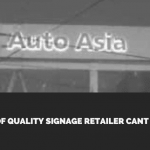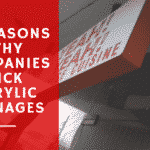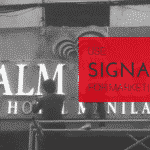
The National Fire Security Organization (NFPA) approximates that there are an average of 37,000 fires on manufacturing as well as commercial residential properties in the USA every year. Of these, the leading causes are cooking tools, home heating tools, and electric distribution/lighting devices. When a fire bursts out, the effects are double: there may be serious or deadly injuries to employees, and also extensive damage to residential property. Those 37,000 fires bring upon $1 billion in straight home damage.
Fire security is incredibly vital for every workplace despite the market, considering that they can happen anywhere any time. Each center ought to stick to established fire codes, perform a thorough evaluation of existing fire risks, have a considerable understanding of fire suppression equipment, and also have an extensive emergency situation strategy in place. Via training and prep work, you can help reduce the risk of a fire breaking out in your facility, and make certain that workers know what to do if one does happen.
Fire Safety sign Regulations and Requirements
In the USA, there are three major organizations associated with fire safety sign guidelines. These are the IFC (International Fire Code), OSHA, as well as NFPA.
The NFPA is the leading resource for fire dangers and safety. There are several NFPA codes pertaining to the workplace that are particularly crucial:
NFPA 30: Combustible Liquids Code, which focuses on the safe storage of flammable fluids. Safety labels included with these liquids should detail their name, combustible warning, flash point, as well as fire point.
NFPA 70: National Electric Code (NEC). This code is crucial for electrical professionals, as it develops treatments for the secure setup of electrical circuitry equipment.
NFPA 70E: Requirement for Electrical Safety sign And Security in the Workplace A relative to the NEC, this code applies to every organisation. It especially concentrates on 3 sort of energy dangers: arc flash, electrocution, and arc blast. These hazards frequently cause fires.
NFPA 72: National Smoke Alarm as well as Signaling Code. This offers standards ablaze discovery and emergency interactions, and additionally covers mass alert systems for public threats such as nuclear, biological, as well as chemical emergencies.
NFPA 99: Fire Safety sign in Health Care Facilities, a specialized code that was embraced to deal with the special environment and also dangers of health care. In 2012, NFPA 99 became a code as opposed to a conventional and also embraced a risk-based technique.
NFPA 704: Requirement System for the Recognition of the Hazards of Materials for Emergency Action, which supplies a constant labeling system for communicating dangerous products to first -responders. This code is well known for systematizing the fire diamond, which is split into 4 color-coded sections and covers flammability, instability, health hazards, and unique preventative measures.
Established by the International Code Council, the International Fire Code (IFC) is a paper recognized around the world that standardizes fire safety sign as well as establishes requirements for fire security systems, as well as fire avoidance strategies. It is currently utilized in 40 states, and also was created with the intent for globally application.
One of OSHA’s key areas of emphasis is fire prevention in the office. OSHA’s conventional 1910.39, “Fire safety sign Program,” develops needs that help employers lower the threat of fire as well as guarantee that employees will certainly be risk-free if a fire does happen. The conventional covers needs for a prevention plan, emergency exits, staff member training, fire suppression choices, as well as the identification of combustible or flammable products and also ignition sources. If your workplace has ten or more staff members, you are called for to have a fire prevention strategy.
Fire Threats in the Work environment.
The very first step to fire safety sign is assessing the existence of fire risks within your office. In a lot of centers, there are 3 primary sorts of dangers to assess: electric dangers, combustible materials, and combustible materials.
In between 2011 as well as 2015, illumination and also electrical circulation devices were the leading source of framework fires on industrial buildings. Electric problems, such as harmed expansion cords, obstructed electrical panels and heating units, and overloaded circuits usually bring about fires. Discharges are additionally generally triggered by electrical events such as arc flash. Maintenance of power cords as well as various other electrical equipment must be carried out regularly.
Work environment fire safety sign are additionally frequently caused by improper storage space of combustible material or a build-up of combustible dust. Many centers manage combustible fluids such as solvents and paints, or there is a risk of combustible dust from coal, steels, and foodstuff such as grain. Combustible and also combustible materials both shed, just at different flash points; the difference between being “flammable” and being “combustible” is that flammable products have reduced flash points (reduced temperature levels at which surface area vapors will spark), and also flammable materials have a high flash point. Both are dangerous and also should be appropriately taken care of as well as saved.
Dust surges specifically are a harmful yet frequently overlooked fire risk. There should be 5 aspects in order for a dust surge to happen: presence of dust, diffusion of dirt, oxygen airborne, confinement, and also an ignition source. These are known as the “Dirt Surge Pentagon.” Combustible dirt threats exist in a variety of markets and also are fatal due to the fact that an initial explosion generally causes extra dirt to be distributed, which leads to a secondary, extra devastating surge. Deadly injuries as well as substantial building damages often occur throughout these secondary surges. OSHA suggests an extensive hazard evaluation of all materials, procedures, areas, and prospective ignition sources within a facility to decrease the risk of these unsafe events.






